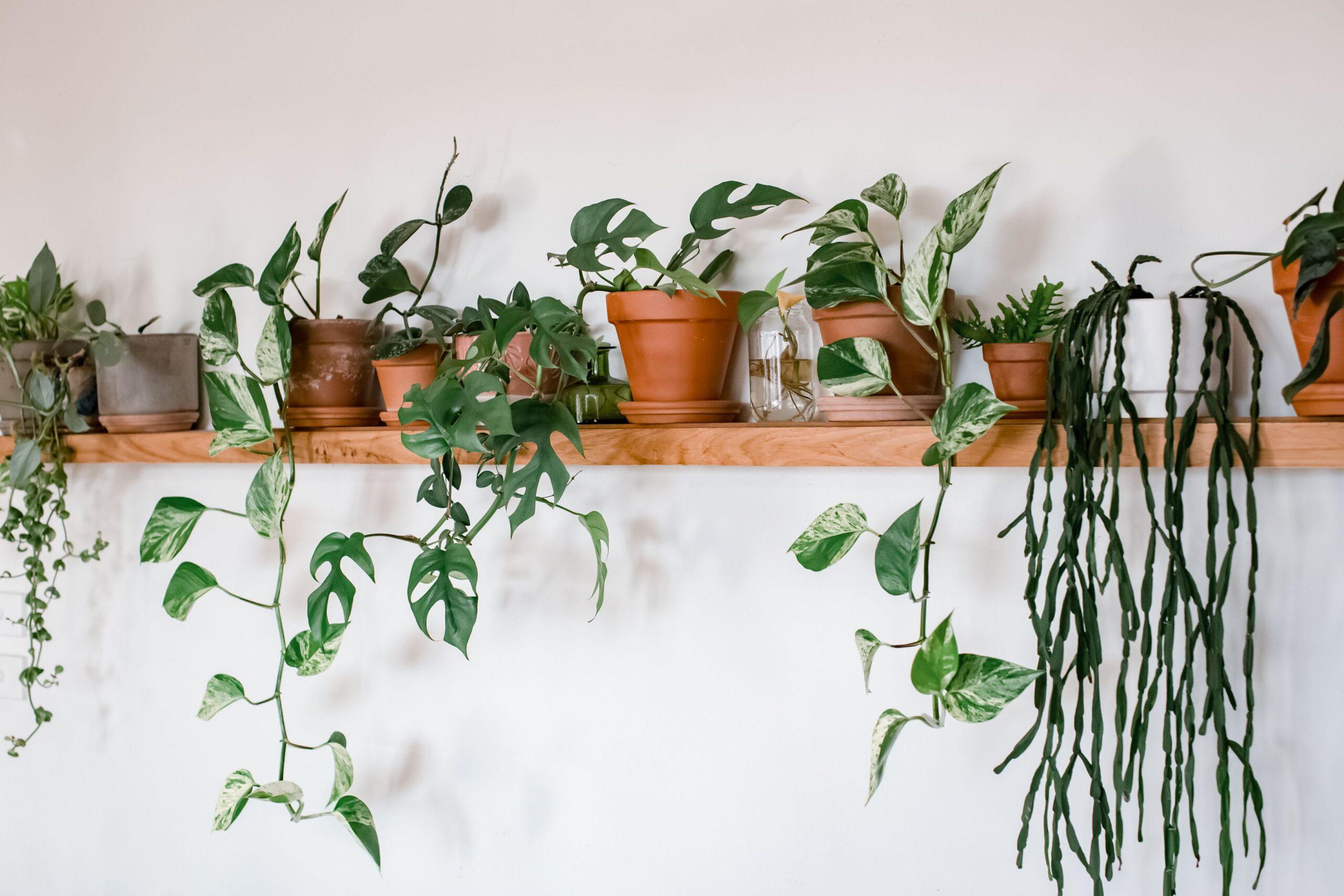- The benefits of growing a houseplant
- Decor Ideas
- How to take care of indoor plants?
- How to feed houseplants?
- How to water indoor plants?
- How to get rid of fungus gnats in houseplants?
- What is low light for plants?
- What are the best indoor hanging plants?
- Small and middle houseplants
- Large houseplants for indirect bright light
- Do you really need to take care of houseplants?
Houseplants
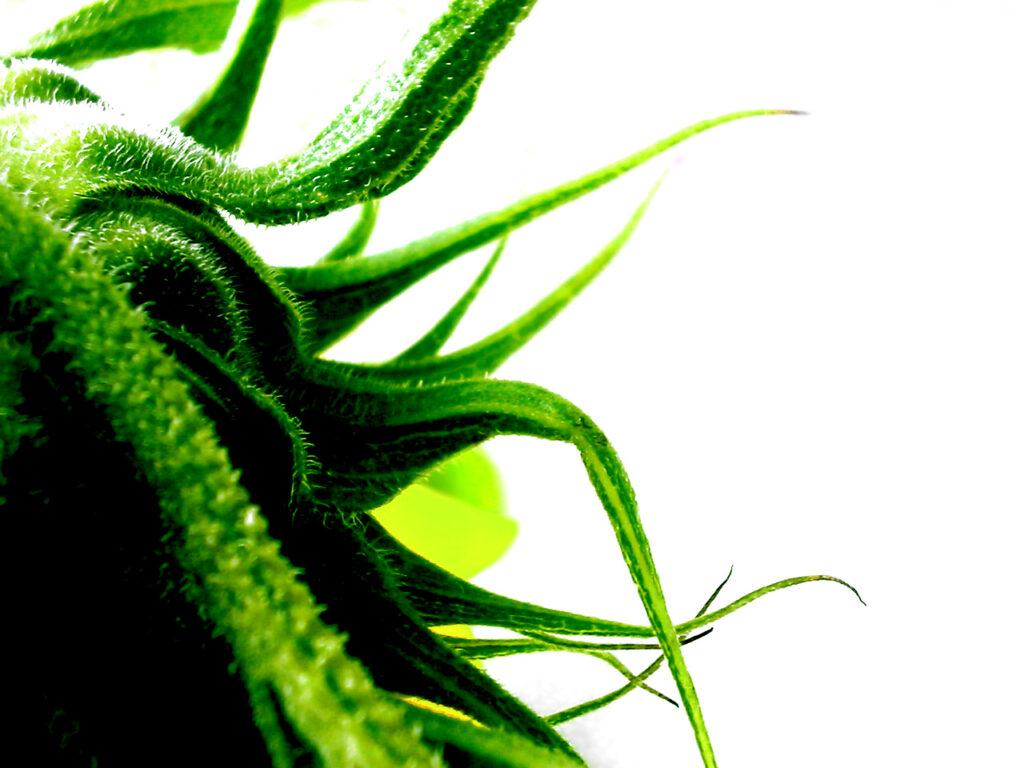
The good news is plenty of plants can thrive in a dark apartment. They may not love it, but they will adapt in an effective way. So when we talk about the best indoor plants for “low-light conditions,” what we really are trying to identify is the plants most tolerant of living in a dark apartment with one wall of windows (or possibly, one window).
Many plants can grow indoors in relatively low-light environments, but the true low-light plants will be the ones that thrive in these conditions. A healthy plant should have healthy leaves and stems with no brown spots or signs of broken stems.
The best plants for low-light conditions include: ferns, philodendrons, and spider plants. The key is to find a plant that’s easy to care for and doesn’t require much light. Also, consider the size of the pot you’re going to use and how much room it will take up in your apartment.
The benefits of growing a houseplant
Did you know that houseplants have a huge impact on the environment you live in? For example, they boost the energy and make the whole home feel like home. They are not only plants because there is research that shows that they have consciousness and contribute to the relationship between people living there.
Imagine you have a bad day – coming back home might not cheer you up but the idea that you need to take care of the plants can help you ignore the problem. As Jack Sparrow says “The problem is not the problem. The problem is your attitude to the problem”. So, think about how useful your mind could be having plants. Here are several benefits of growing a houseplant.
Indoor air quality
Indoor air quality is a growing concern for everyone living in a home, a workplace, or any other type of building. With the air quality inside your home or office lacking, it’s important to know how to improve it. Houseplants can help purify the air and reduce exposure to indoor pollutants such as ozone and toxins.
Plants help remove pollutants from the air and give off oxygen, which helps purify indoor air. Some varieties of plants are able to absorb certain chemicals in the air, such as benzene, xylene, formaldehyde, toluene, xylene, and acetone. Just think of what a healthier home would be with all that fresh oxygen!
Houseplants can help reduce indoor air pollution from household items like cooking, cleaning products, and even cigarette smoke. They also offer a calming green space in a busy world. You no longer have to worry about asthma or allergies in your home. Simply add a plant!
Decor Ideas
For your mind and body to be at their best, it’s important to have a harmonious home. Plants make for beautiful décor but they also provide oxygen, help with allergies, and are good for the soul. Get plants in your home to infuse positivity and create a sense of peace.
Living in a harmonious environment is something that many people strive for. This is achieved through decorating your home or business with fresh flowers. Flowers are commonplace in the natural world, and they have an uncanny ability to emit positive vibes. Flowers are also known to help people relax and feel happier.
Some Houseplants Decor for Living Rooms
Some Houseplants Decor for Living Bedroom
Some Houseplants Decor for Living Bathroom
How to take care of indoor plants?
What do you love about plants? We all have a unique way of nurturing and caring for our indoor plants. Some people keep them alive by feeding them, while others take the time to water and care for them, while some find joy in watching their plants grow.
The best way to care for indoor plants is to start them in small containers. You can then upgrade or move them to different pots as they grow, allowing the roots to spread out and the plant to thrive. Make sure your plants are getting enough sunlight. Here are some other things you should keep in mind when caring for your plants:
- Give the potting soil a good mix
- Water indoor plants when they start to wilt or droop
If you want to give your home a natural and green vibe, consider giving your indoor plants a little TLC. Plants are one of the most sustainable forms of living whether they’re growing wild or being kept indoors.
How to feed houseplants?
Making your own houseplant fertilizer might seem like an intimidating science experiment, but it’s actually a super easy way to save money using items you would already have around the home. Pots, trays, and other materials that would otherwise go in the trash can be used to grow fresh food for your plants that will keep them healthy and thriving. Combine baking soda, sugar, and water in a jar to create homemade plant food.
The N-P-K ratios are an indicator of how your plant is doing. When you know what to look for, you can determine if your plants need more or less of anything. For example, if you notice that your plants are rotting or losing their green color, it’s time to fertilize them with something much more potent than just water.These three elements are essential for plant growth and development. They are often used to help determine the health of your houseplants. To understand how these nutrients work in your houseplants, you must understand how they’re activated and what their effects can be:
- Potassium fertilizer when you want to encourage strong flowering.
- High phosphorus will be required if you’re trying to grow a plant that is going to flower a lot,
- Nitrogen will be needed for plants that want to form large leaves and stems.
Here are some simple homemade fertilizer options to give your houseplants a good nutrient boost naturally without eating a hole in your wallet:
- Crushed eggshells for lowering acidity and adding calcium
- Banana peels for adding potassium
- Used coffee grounds for adding nitrogen
- Green tea for acidifying the soil
- Molasses for adding macronutrients like carbon, iron, sulfur etc.
How to water indoor plants?
I don’t even know where to start. Let’s start with making sure that you have the necessary tools. You’ll need a plant pot, a plant, and something to water the plant with – like a sprayer or watering can.
One of the best ways to water indoor plants is with a spray bottle. You can saturate the soil and then give it a thorough watering from the bottom up. If you want to add more nutrients to your plant, you can add a bit of fertilizer in your plant’s soil and finish by spraying them with water before putting them back in their pots
You can fill up your container with water or use a small saucer.
Indoor hanging plants
No, it’s best to water your hanging planter while it’s still in its container. This way, the roots will stay moist and healthy and the flowers will continue to grow! It is best to water your plant while it is hanging. If you plan on taking it down, make sure that the pot is deep enough for the plant to fit into and that the soil is dry before watering.
You can also use a spray bottle or misting can to dampen the leaves of your plant. Ask your local florist if they would like to suggest some tips with you like nutrients and ways of growing indoor plants.
https://www.loopliving.co/blogs/news/how-to-water-a-hanging-planter
How to get rid of fungus gnats in houseplants?
A fungus gnat infestation can come from anywhere. The most common ways fungus gnats get into your house are either in the soil of a newly purchased plant, or in a bag of potting mix that you bring indoors. But fungus gnats can also come in with a plant that was outside during the summer. Heck, they can even fly in Fungus gnat larvae that thrive in moist soil, and they can’t survive in dry soil.
The easiest and most effective method of plant gnats control, and ultimately eliminating fungus gnats, is to make sure you never overwater your plants. Be careful though, you don’t want to allow the soil to dry out completely on most houseplants.
Will Fungus Gnats Kill Plants?
The short answer is no, fungus gnats will not kill your houseplants. Fungus gnats are mainly just a nuisance and are rarely destructive to the plant. Sometimes they can cause root damage if the infestation is heavy, but normally fungus gnats only eat rotting roots. Fungus gnats can be a real pain. They’re tiny flies that feed on plant juices and will completely destroy your plants if left unchecked.
Fortunately, fungus gnats will not kill a plant, but they can cause it harm. There are a few ways to manage the issue, including wrapping your plants in a wet paper towel, covering them with a sticky trap.
Water plants from the bottom
Fungus gnat larvae live in the top inch of the soil, which tends to stay pretty moist when you water plants from the top. Bottom watering plants will make it easier to maintain dryer top soil, without risking the overall health of the plant.
What is low light for plants?
The best houseplants for low light require indirect light, but they perform better than other plants in high-light conditions. That’s because they’re able to photosynthesize and convert the sun’s energy into oxygen and sugars without using their leaves, which provide them with no protection from scorching sunlight. Find out which ones are the best for your lighting situation.
The right amount of light is a key factor in making sure your plants stay healthy and grow up to their full potential. Too much or too little light can quickly stress a plant, which makes them more prone to disease, pests, and premature death.
Fortunately, most plants come labeled with information about their sunlight preferences. However, finding optimal lighting for your plant can take some trial and error, so you’ll have to monitor it closely. By the way, don’t forget to water your plants!
https://www.thespruce.com/how-to-determine-sunlight-levels-for-houseplants-1402652
Types of plant lighting
There are three main types of interior plant lighting: Bright Light, Low Light, and Fluorescent.
- Bright light: Bright light means a sunny window facing south or west that receives direct light throughout the day. He should receive a minimum of five to six hours of sunlight each day, preferably more. This can be difficult to achieve in the winter, but resist the temptation to move your plant closer to the window. Most plants that need bright light will not be able to cope with the cold so be careful with this specification.
- Indirect light is a type of light that comes from an external source and falls on the surface of your plant. This can be found in places with east-facing windows or in rooms that receive full light from a south- or west-facing window. It can also mean there is a sheer curtain between the light source and your plant, for instance.
- Low-light situations can make it difficult for plants to grow. Artificial light is a great way to help plants grow in low-light conditions. If you can’t easily read a newspaper, it’s probably low light.
What are the best indoor hanging plants?
Alsobia is a beautiful plant that can help change the look of your home or office. Its flowers are just one of the many other reasons to have this popular houseplant. It’s also surprisingly easy to grow, even for beginners.
The spider plant (Chlorophytum comosum) is loved for its durability and resilience. The plants feature grassy leaves that are available in solid green or variegated with cream or white. “You’re also sure to love the little plantlets it produces at the ends of its hanging stolons,” says Hancock. Spider plants propagate easily via the little
Strawberry Begonia is a perennial plant with dark green heart-shaped leaves and pink flowers. It produces offshoots that grow on raspberry-red stolons that hang down from the plant like a living mobile. Propagating this plant is simple and easy—clip off these offshoots, pot them up, and grow them out as new plants.
Asparagus fern plants are amazingly easy to grow. They’re also fantastic for indoor gardening, especially because they take up very little space. The best part is that they don’t require any special care, like other houseplants. It’s important to make sure you keep your plants moist but not wet, and give them indirect light.
The String of Pearls is a tender and unusual plant that can be grown in pots, hanging baskets, or even window boxes. It’s also known as the Weirdest Amazing Plant you’ll ever meet because it’s really easy to grow – just leave it in bright, indirect light with enough water to keep the soil steadily moist.
Small and middle houseplants
Air plants are an excellent addition to any terrarium. Check out the different types of air plants available on our website. They’re easy to care for and can grow anywhere (but bright, indirect light is the best). Plus, they’re the perfect addition to any home or office!
Kalanchoe makes for a marvelous mood booster in the kitchen. Low humidity is a friend of this plant, which will bloom even in the wintertime. Water thoroughly, then leave it until the soil dries out. With ikonica you’ll have a healthy and beautiful plant that will grow into a bush-like grouping with long-lasting blooms.
Jades are one of the most beautiful plants you can have. They have a hardy nature and they’re not too complicated to take care of. Put this plant in a large pot that’s a few inches taller than it is wide, keep it on the dry side, and give it a consistent amount of light. Jades prefer watering every few days, but they don’t need to be watered too much.
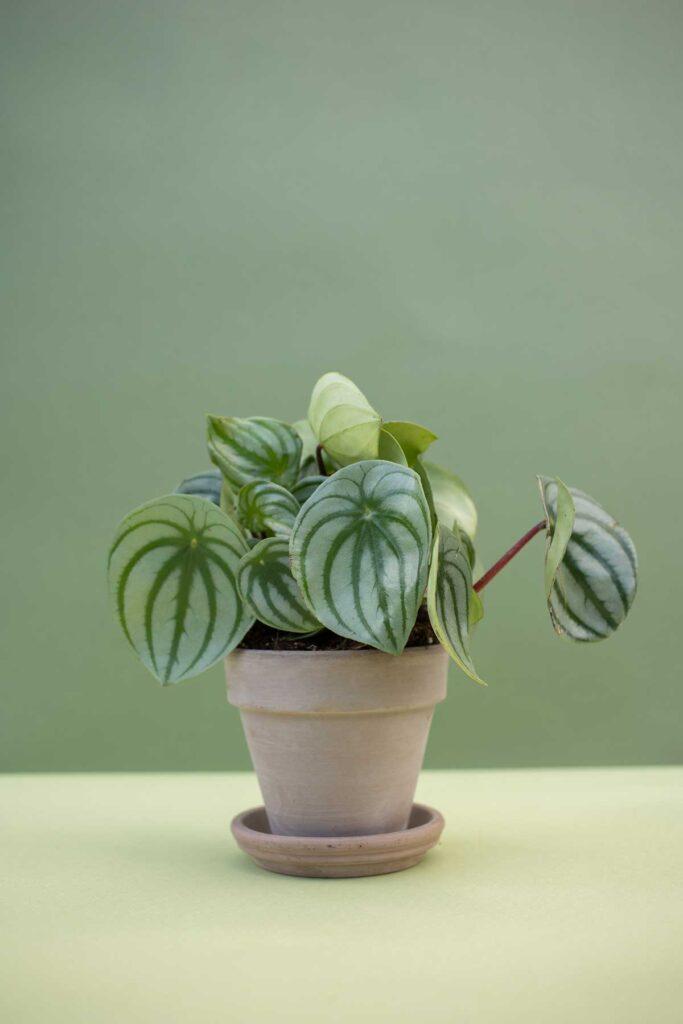
Peperomia 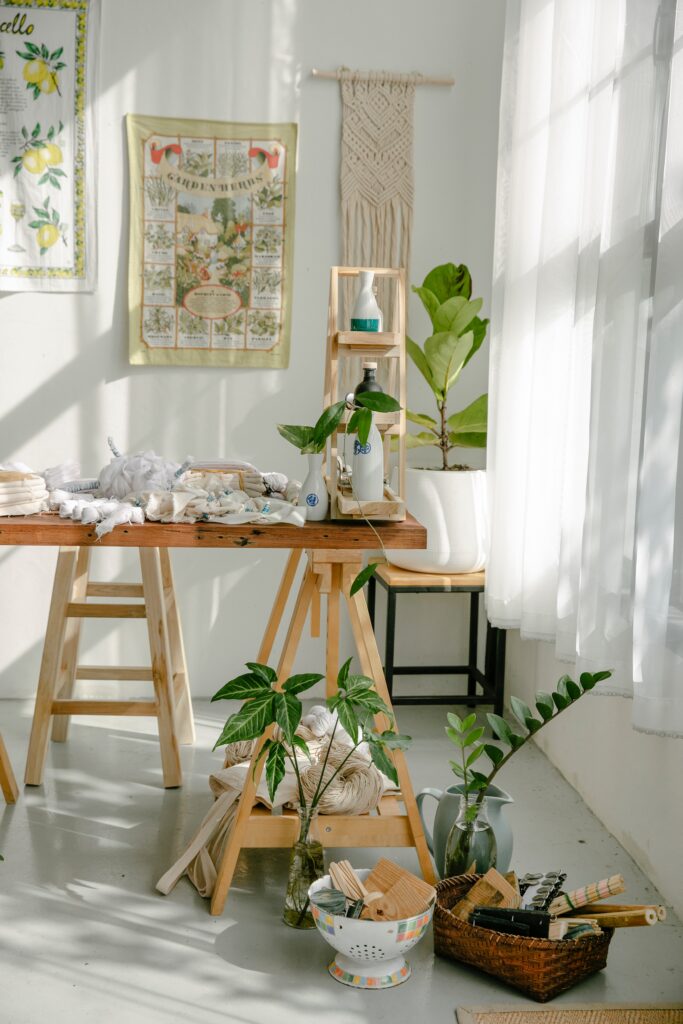
Houseplants 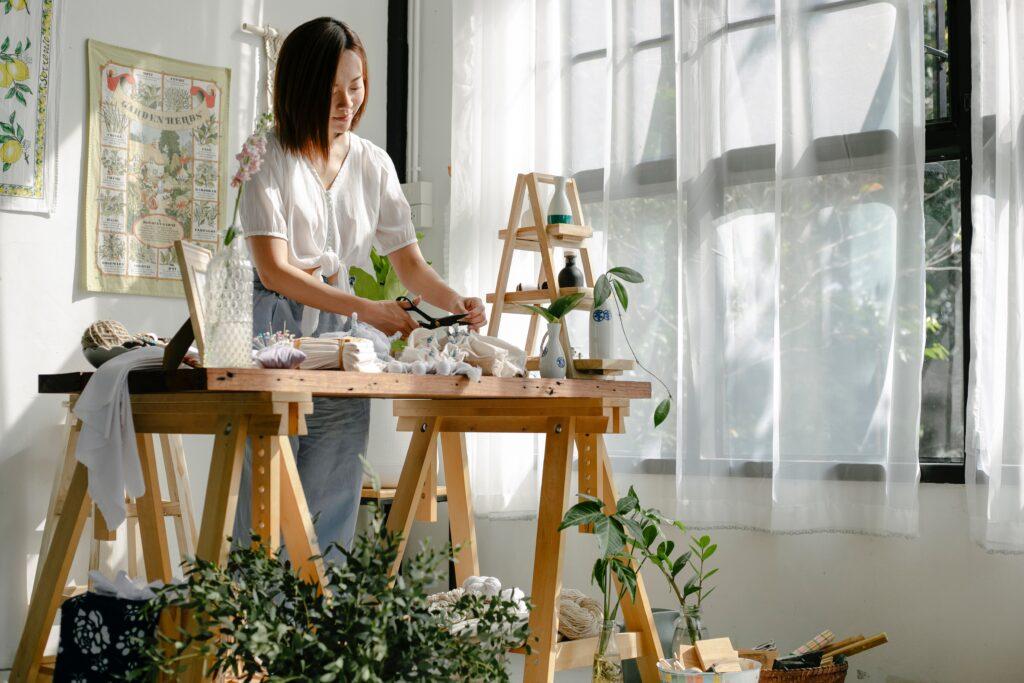
Womans Houseplants 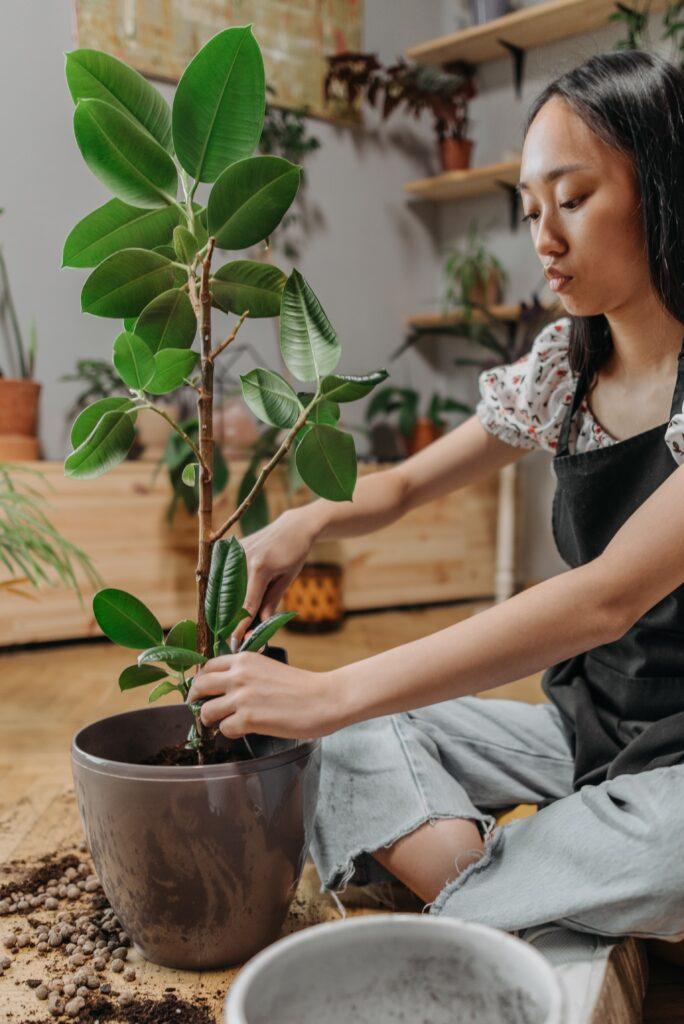
Womans Ficus 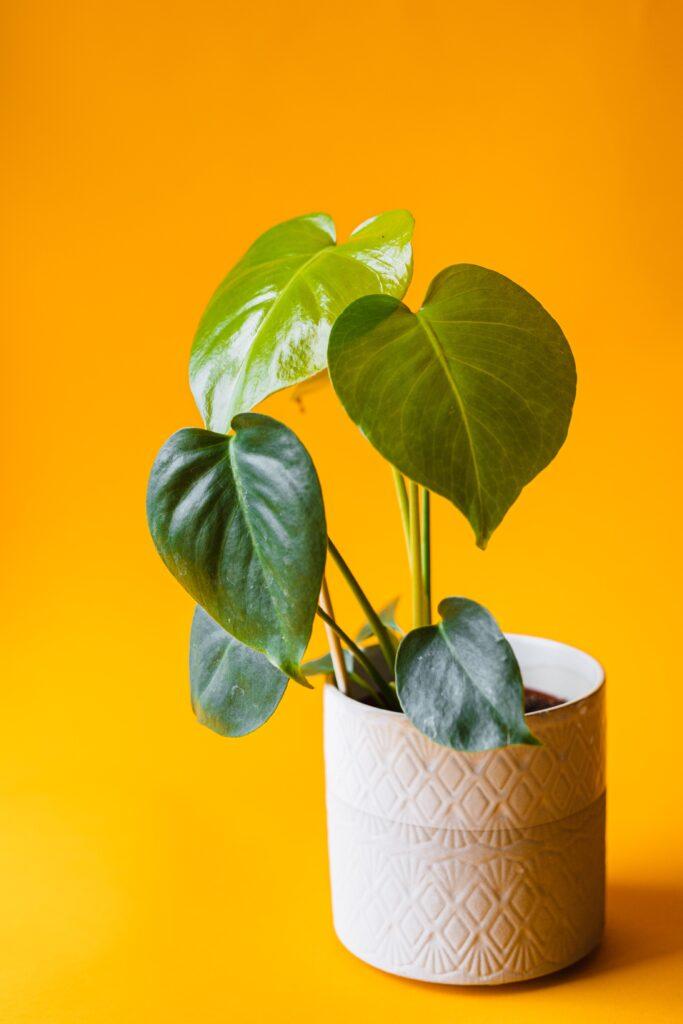
Ficus
Peace lilies are beautiful and delicate flowers that come in a variety of colors and sizes. They grow on a stalk and have the ability to thrive even in low light conditions. These plants require little care, don’t need to be watered often, and can create a peaceful ambiance in any room.
Anthurium plants are the perfect household plants. They are easy to take care of, require little light, and don’t need special soil or high humidity. With a vibrant array of colors, these plants are sure to add color to any room! For this reason, they make great gifts for friends and family members.
Large houseplants for indirect bright light
Dracaena Marginata is a large houseplant that comes in many forms, each with its own silhouette and stature. Dracaena marginata is one of the most popular varieties for those seeking a dramatic indoor garden. This variety grows to 8-feet tall, with a spray of spiky leaves, and a willowy trunk.
The Areca Palm is a popular choice for indoor trees due to its ability to thrive in low light conditions. It’s also easy to maintain and doesn’t need much sunlight – making it the perfect choice for people living in colder regions, such as Canada. If you have a south- or west-facing window, you’ll be able to grow an Areca palm.
Corn plants are some of the easiest houseplants to grow—and they do grow, to heights of 12 feet or more. If you desire to keep your corn plant on the shorter side, cut the top of the stems as soon as they reach your preferred height.
Banana trees are a great indoor plant because they thrive in low light and can remove toxins from the air. They grow to a height of about 5-9 feet, which makes them great for apartment dwellers or people who have limited outdoor space. The dwarf varieties are also a good choice because they require less space and don’t grow too tall.
Lemon Tree! Lemon Tree! One of the most popular citrus trees, the lemon tree provides a fresh source of citrus all year round. Not only is Meyer lemon easy to grow indoors, but it’s also quick growing and adaptable. It’s also known to be one of the best varieties for indoor cultivation, which makes it perfect for anyone who lives in an apartment.
Brought to you by
Do you really need to take care of houseplants?
There’s a good reason for that – beyond just their visual appeal, houseplants can help your home breathe easier and reduce CO2 levels. And just as they’re on the rise, we’re hearing rumblings of a plant shortage. So if you’re interested in owning a houseplant or updating your current one, now is the time to do it!


